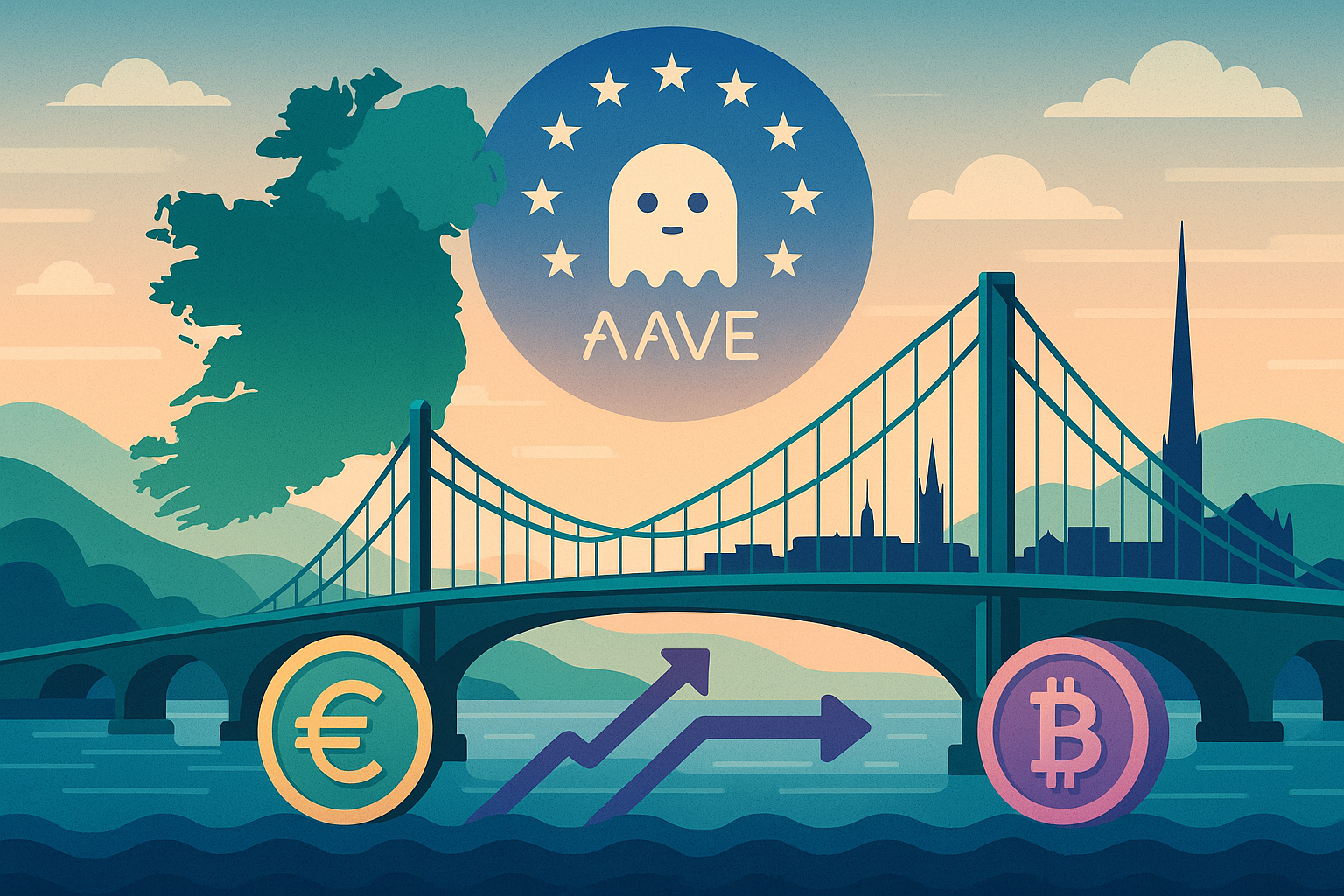- The Central Bank of Ireland granted the license through Aave’s local subsidiary.
- Push allows users to convert euros into crypto assets, including GHO, for free.
- Ireland is emerging as a hub for regulated, decentralized finance in Europe.
The decentralized financial infrastructure took a decisive step in the European regulated fintech ecosystem when Aave Labs received authorization under the Markets in Crypto-Assets (MiCA) framework.
The regulatory nod, granted by the Central Bank of Ireland, allows Aave Labs’ fiat-to-crypto platform, Push, to operate across the European Economic Area (EEA).
This means that European users can now exchange between euros and digital assets, including Aave’s own stablecoin, GHO, without having to rely on centralized exchanges.
The approval makes Push one of the first DeFi-native platforms legally authorized to offer stablecoin ramps in Europe.
Operated through Push Virtual Assets Ireland Limited, a wholly owned subsidiary, the platform introduces euro-crypto conversions at no cost, giving it a pricing advantage over traditional financial services providers and exchanges.
However, Aave Labs has not clarified whether this pricing model is permanent.
Aave’s decision to launch Push from Ireland strengthens the country’s position as an emerging regulatory hub for digital assets in Europe.
Push targets centralized exchange dependency on stablecoin onboarding
Push aims to eliminate the friction associated with fiat ramping by creating a direct, regulated path between euros and crypto assets within the Aave ecosystem.
The platform’s focus on euro liquidity and GHO integration supports the broader goal of reducing DeFi’s dependence on centralized exchanges for stablecoin access.
Aave Labs described the regulatory infrastructure as essential to onboarding the next wave of mainstream DeFi users.
With Push, the protocol creates a gateway for users and developers to interact with stablecoins within a framework that meets MiCA regulatory and audit requirements.
That assurance of regulatory transparency is especially relevant as the use of stablecoins continues to increase in lending, lending and yield farming protocols.
Stablecoin regulation drives European crypto market integration
MiCA’s stablecoin framework plays a central role in allowing services like Push to flourish.
The legislation, which came into effect earlier in 2025, sets clear rules for the issuance of stablecoins and crypto asset service providers (CASPs) in the EU.
Aave’s authorization under MiCA signals that regulators are increasingly open to DeFi-native firms participating in the financial system, as long as compliance benchmarks are met.
As a DeFi-first platform offering institutional-grade liquidity, Aave’s move to operate within MiCA guidelines marks a turning point in how decentralized services are integrated with traditional financial structures.
Push’s entry will likely be closely watched by peers and competitors, especially as the stablecoin sector continues to scale at a rapid pace.
While Push is currently focused on Euro and GHO conversions, the foundation laid in Ireland could lead to broader service expansions as MiCA regulations continue to shape Europe’s crypto infrastructure.
Aave’s success could lead to other DeFi protocols following suit, potentially making the EEA a hub for regulated stablecoin innovation.


